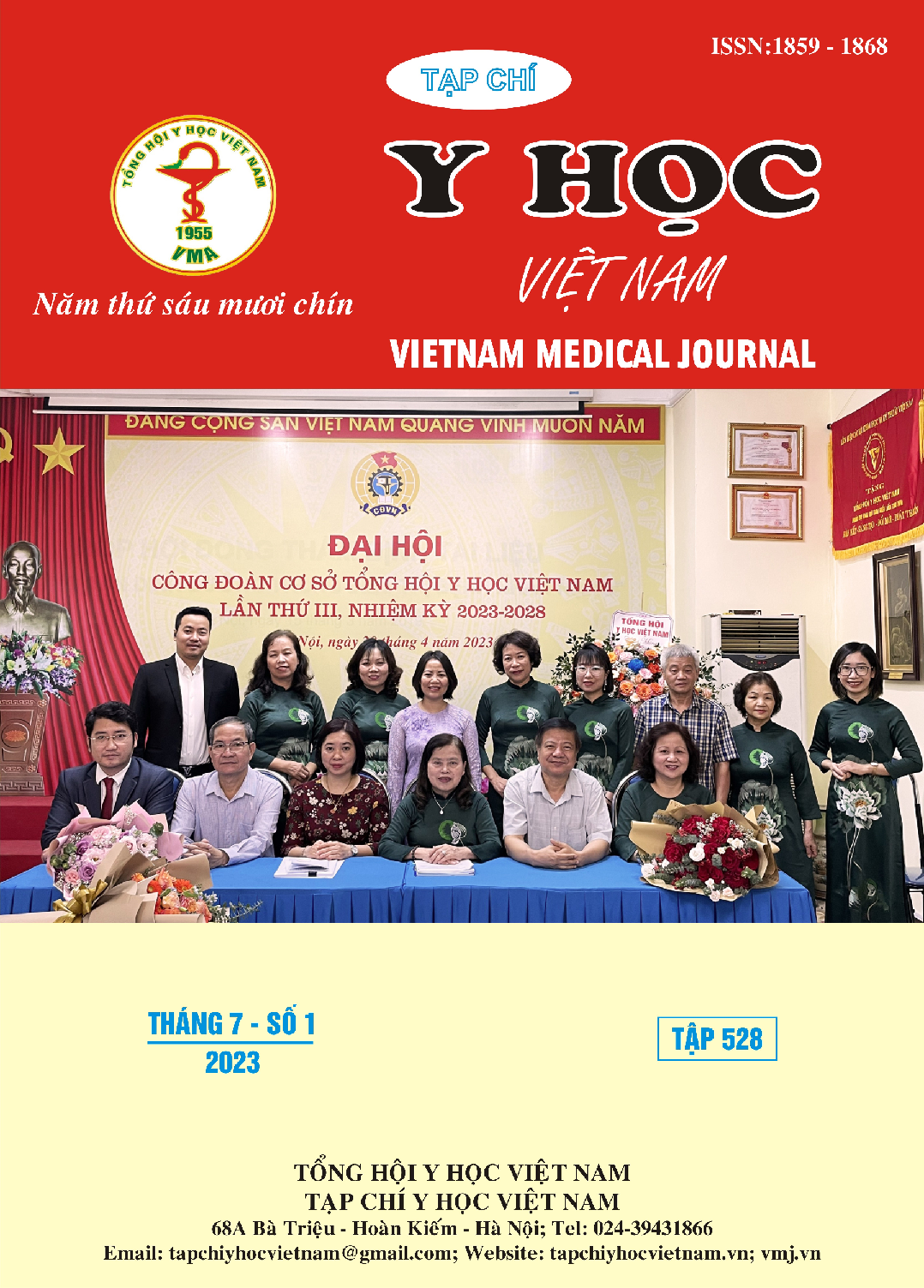APPLICATION OF HYBRID PROCEDURE IN TREATMENT OF CHRONIC ILIAC OCCLUSIVE DISEASE WITH TASC II C, D LESIONS
Main Article Content
Abstract
Background: An interventional iliac artery has been widely applied in Vietnam. However, for complex pelvic floor lesions such as TASC II C, and D, the intervention alone is complicated because these lesions are associated with the femoral artery layer. Therefore, in practice, we realized that it is necessary to combine with open surgery to solve this lesion simultaneously to bring higher efficiency in the treatment process for patients with chronic lower extremity artery occlusion. That is also why we conducted a study on the effectiveness of using surgical methods combined with endovascular intervention in treating iliac artery lesions TASC II C, D. Objective: Evaluation of the results of surgery combined with endovascular intervention (Hybrid procedure) in treating chronic iliac artery occlusion TASC II C, D. Methods: Retrospective descriptive case series. Results: The study had an average age of 69.2 ± 8.2; men accounted for the majority, and TASC lesions C and D accounted for 26% and 74% of the sample, respectively. Balloon angioplasty combined with stent placement accounted for 93.5%, and endarterectomy with femoral artery angioplasty by saphenous vein accounted for 74.2%. The technical success rate is 100%, and complications are 19.5%. At 1-year follow-up, the rate of primary patency was 80.8%, the major amputation rate was 3.8%, and the mortality rate was 7.7% of the sample. Conclusion: Hybrid procedure to treat TASC II C, D lesions in patients with chronic iliac artery occlusion has significantly improved clinical symptoms, fewer complications, the high rate of techincal success and primary patency.
Article Details
References
2. Sharma G, Scully RE, Shah SK, et al. Thirty-year trends in aortofemoral bypass for aortoiliac occlusive disease. Journal of vascular surgery. Dec 2018;68(6):1796-1804.e2. doi:10.1016/j.jvs.2018.01.067
3. Chiu KW, Davies RS, Nightingale PG, Bradbury AW, Adam DJ. Review of direct anatomical open surgical management of atherosclerotic aorto-iliac occlusive disease. European journal of vascular and endovascular surgery: the official journal of the European Society for Vascular Surgery. Apr 2010;39(4):460-71. doi:10.1016/j.ejvs.2009.12.014
4. Mason RA, Smirnov VB, Newton GB, Giron F. Alternative procedures to aortobifemoral bypass grafting. The Journal of cardiovascular surgery. Mar- Apr 1989;30(2):192-7.
5. Marston W. A., et al., "Natural history of limbs with arterial insufficiency and chronic ulceration treated without revascularization", Journal of vascular surgery, 2006, 44(1), pp. 108-114.
6. Piotrowski JJ, Pearce WH, Jones DN, et al. Aortobifemoral bypass: the operation of choice for unilateral iliac occlusion? Journal of vascular surgery. Sep 1988;8(3):211-8. doi:10.1067/ mva.1988.avs0080211
7. Bredahl K, Jensen LP, Schroeder TV, Sillesen H, Nielsen H, Eiberg JP. Mortality and complications after aortic bifurcated bypass procedures for chronic aortoiliac occlusive disease. Journal of vascular surgery. Jul 2015;62(1):75-82. doi:10.1016/j.jvs.2015.02.025
8. Bosse C, Becquemin JP, Touma J, Desgranges P, Cochennec F. A Hybrid Technique to Treat Iliofemoral Lesions Using a Covered Stent Associated with Open Femoral Repair. Annals of vascular surgery. Jul 2020;66:601-608. doi:10.1016/j.avsg.2019.12.010
9. Maitrias P, Deltombe G, Molin V, Reix T. Iliofemoral endarterectomy associated with systematic iliac stent grafting for the treatment of severe iliofemoral occlusive disease. Journal of vascular surgery. Feb 2017;65(2):406- 413. doi:10.1016/j.jvs.2016.07.130
Kavanagh CM, Heidenreich MJ, Albright JJ, Aziz A. Hybrid external iliac selective endarterectomy surgical technique and outcomes. Journal of vascular surgery. Nov 2016; 64(5):1327-1334. doi:10.1016/j.jvs.2016.03.468


